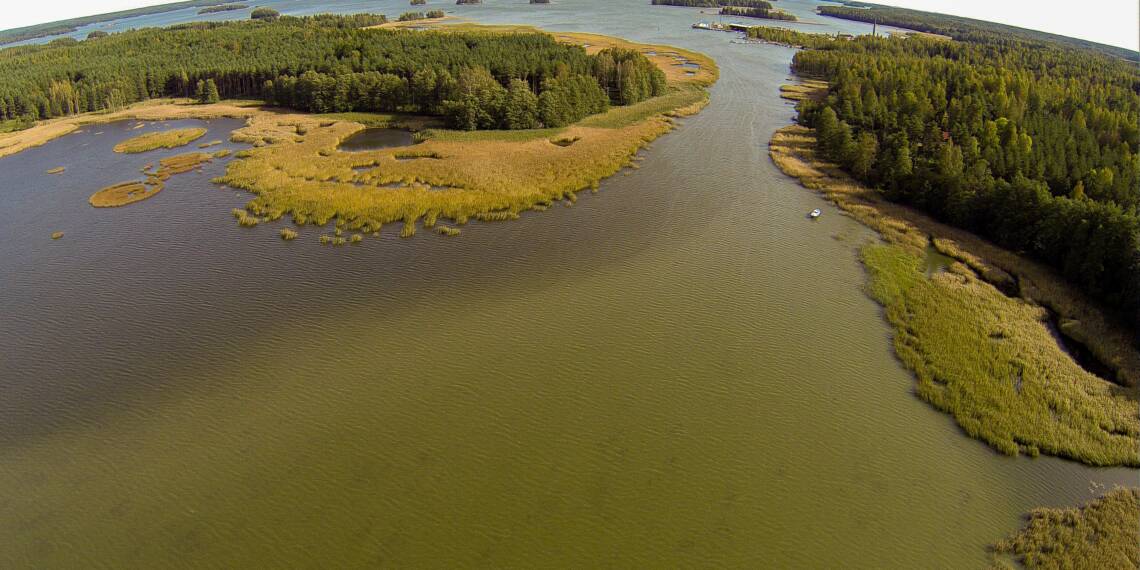
Where do the nutrients in the Baltic Sea come from?
The nutrients that end up in the Baltic Sea mostly originate from the sea’s drainage basin. Some of the nutrient load in the sea is due to natural runoff, but the majority comes from human activities.
Finland is almost entirely within the Baltic Sea drainage basin; only Northern Lapland and the northeastern corner of Kainuu are outside it. Activities within the drainage basin burden inland waters with phosphorus and nitrogen. These nutrients eventually reach the sea via lake and river routes.
Some of the phosphorus and nitrogen, however, remain along the way. Nutrients are particularly retained by lakes where water exchange is slow. In contrast, rivers flowing from areas with few lakes carry most of the nutrients they receive all the way to the sea.
In addition to the load brought by rivers, the sea is burdened by coastal sources of pollution, such as settlements and industries. Fish farming and other activities conducted at sea can also cause local nutrient loading. Additionally, the sea suffers from so-called internal loading, which is the release of nutrients from anoxic bottom areas.
Nutrient loading from Finland has decreased, but not enough.
Nutrient emissions from Finland to the Baltic Sea have decreased from the 1990s to the present day thanks to many emission reduction measures. Despite this, the nutrient load in the sea is still far too high to achieve good water status. The poor progress is indicated by the nutrient flows of rivers discharging into the Baltic Sea, which have not significantly decreased. The nutrients in the rivers mainly originate from diffuse pollution affecting inland waters.
The nutrient amounts brought by rivers are significantly influenced by river flow variations: the more water flows in the river, the greater the amount of material transported by the river. When assessing the effectiveness of emission reduction measures, it is essential to mitigate the interannual flow variation, i.e., to use the so-called flow-normalized nutrient flow as a measure, which takes flow variations into account.
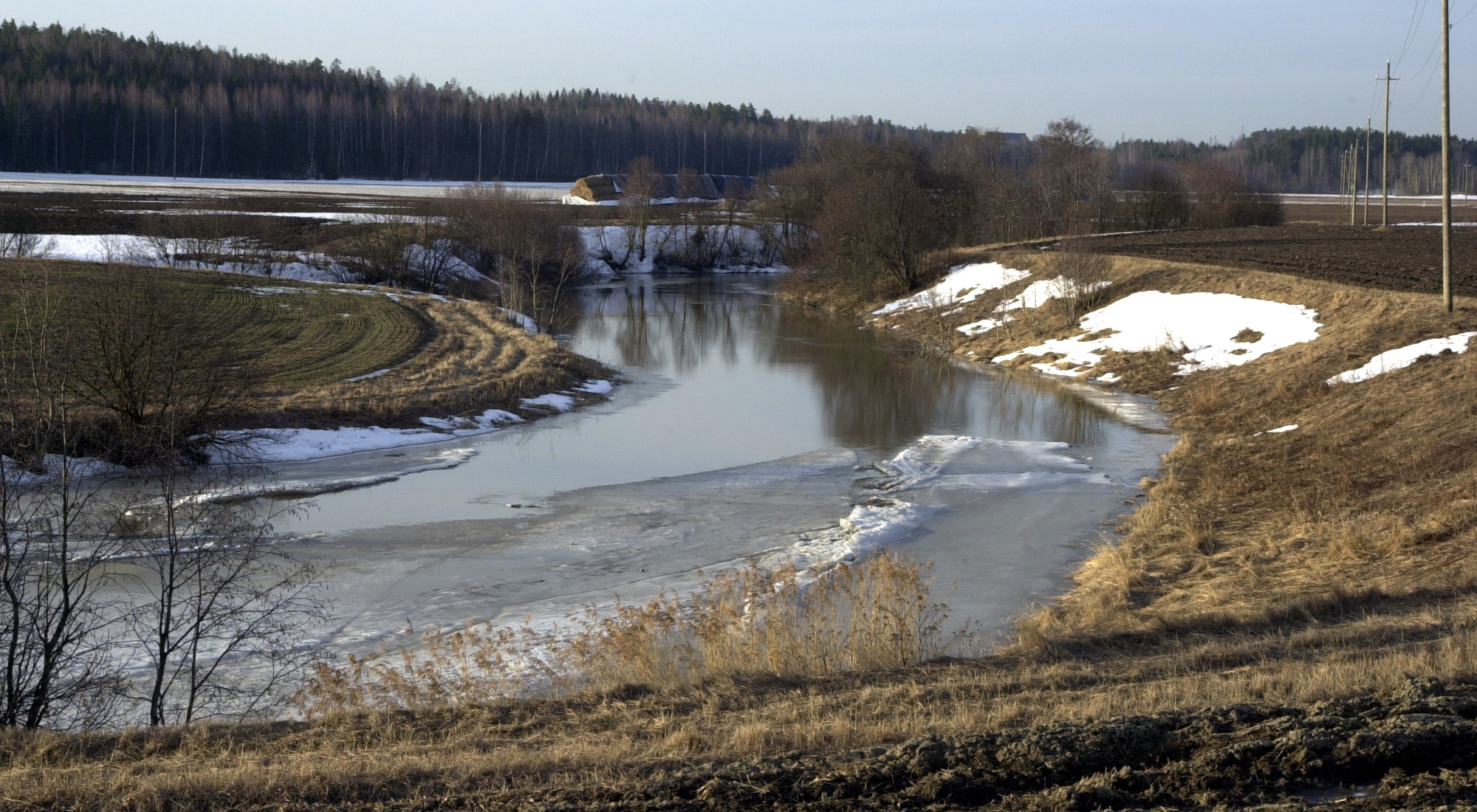
Agriculture is the largest source of nutrient loading
The nutrient load from Finland is mostly from diffuse sources: agriculture and forestry, peat production, stormwater, and scattered settlements. By far the most significant polluter is agriculture. It accounts for well over half of the nutrient load to the Baltic Sea from human activities in Finland.
Agriculture has the greatest impact on the Gulf of Finland and the Archipelago Sea, and the least on the Bothnian Bay. In no marine area has the phosphorus and nitrogen load from agriculture decreased in the long term, i.e., since the mid-1990s, or in the last ten years. However, in recent years, there have been signs that the nutrient load from agriculture flowing into the Archipelago Sea and the Bothnian Bay is beginning to decrease. In other marine areas, the phosphorus load from agriculture has remained unchanged.
The large share of agriculture is partly due to the fact that arable farming is concentrated along riverbanks and coastal areas with few lakes. Thus, nutrients washed from fields easily reach the sea and do not remain along the way.
The situation is worsened by the fact that agricultural nutrient loading often targets those marine areas that are sensitive to eutrophication. These are particularly shallow areas and archipelagos where water exchange is poor
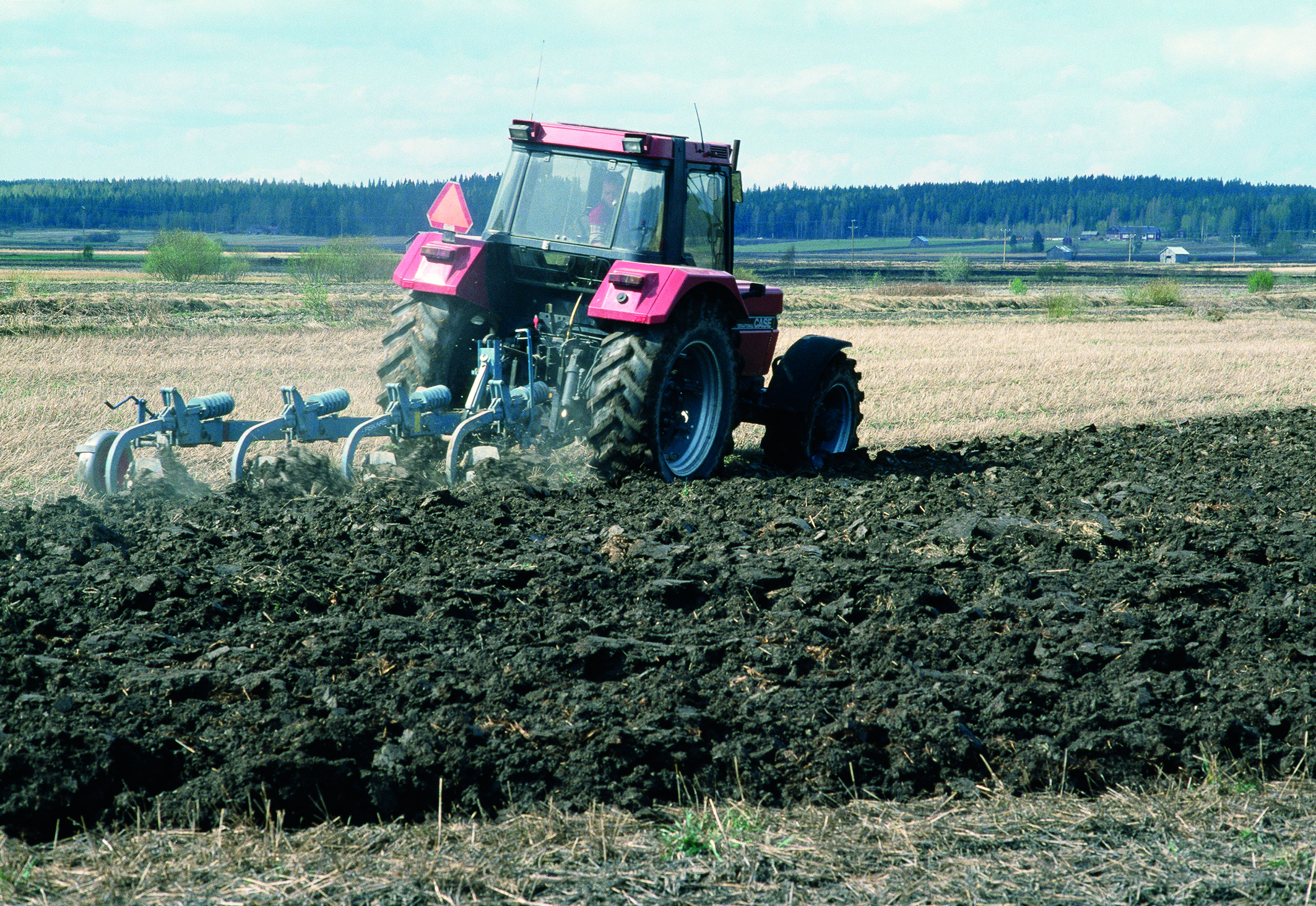
Agricultural nutrient loading is mitigated by various means.
Various measures have been taken to reduce nutrient loading from agriculture. However, the effects of these actions are only visible after a long delay. Although fertilization of fields has been reduced and refined, the heavy fertilization of previous decades is still evident in the high nutrient concentrations and runoff from the soil.
In addition to precision fertilization, nutrient runoff has been reduced by leaving buffer strips along water bodies. Other promising methods include soil improvement agents applied to fields: gypsum, fiber, and structural lime. Gypsum treatment of fields has proven to be particularly effective. On the Savijoki River, a tributary of the Aurajoki River, gypsum treatment has been found to significantly reduce phosphorus runoff from fields.
Good results can also be achieved through nutrient recycling and the utilization of livestock manure. However, the use of livestock manure is complicated by the fact that livestock production and crop cultivation are concentrated in different areas in Finland. This problem can be solved by producing fertilizers from livestock manure, with biogas as a by-product.
The latest methods include long-term care of soil structure and comprehensive water management across the drainage basin. These holistic methods support not only water protection but also many other goals: combating and adapting to climate change, promoting biodiversity, and landscape values.
Climate change complicates the implementation of emission reductions. Decreasing snow cover and increasing heavy rains and floods expose fields to erosion and intensify nutrient runoff.
The nitrogen load from forestry remains high
Nutrient loading from forestry is particularly significant in the Bothnian Bay, whose drainage basin is largely rich in peat and drained. Forestry accounts for over a third of the phosphorus load and a quarter of the nitrogen load from human activities in Finland to the Bothnian Bay.
The phosphorus load to the Bothnian Bay has decreased in the long term (1995–2023). This is believed to be due to the reduction in forest fertilization. In no other marine area has the phosphorus and nitrogen load from forestry decreased. In some places, the nitrogen load has even slightly increased. This increase may be due to climate change, which easily increases nutrient runoff.
The nitrogen load from forestry is mainly due to forest drainage and soil treatment. Especially drainage enhances nitrogen runoff for decades. Peat production adds to the load, although its emissions may decrease over time as peat production declines. However, reducing emissions requires water protection solutions in the aftercare of peat production areas.
Forest phosphorus fertilization caused significant phosphorus loading in the latter half of the 20th century, but since then fertilization has almost been abandoned. Now phosphorus fertilization is making a comeback. However, the use of slow-release fertilizers and the replacement of mineral fertilizers with ash fertilization mitigate emissions.
Nutrient emissions from forestry are being mitigated through various water protection structures and by reducing soil treatment. Instead of drainage, forest owners are encouraged to manage peatland forests with multiple objectives.
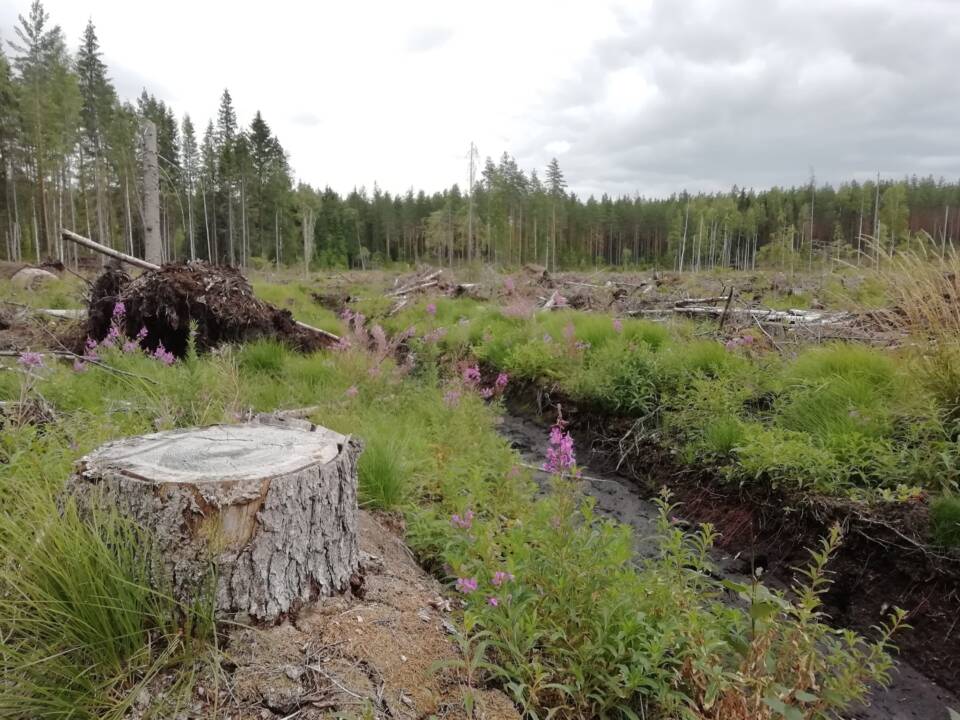
Municipal wastewater burdens coastal waters
Some of the nutrients brought by rivers originate from the wastewater of inland settlements. Coastal areas also receive wastewater from towns located on the coast and in the archipelago, which can have a significant local impact on water quality.
Municipal wastewater is treated quite well in Finland; over 90 percent of the phosphorus in wastewater is removed, and at the largest treatment plants, over 95 percent. Phosphorus emissions from municipalities have, on average, halved since the mid-1990s.
The situation is worse for nitrogen: after agriculture, human wastewater is the largest source of nitrogen pollution in the Gulf of Finland, the Bothnian Sea, and the Kvarken. Nitrogen removal is still being intensified, especially at wastewater treatment plants located near the coast. Effective nitrogen removal is particularly focused on plants along the coast of the Gulf of Finland and the Archipelago Sea; in the Gulf of Bothnia, the main focus remains on phosphorus removal, as phosphorus is the primary nutrient limiting algae production there.
Problems are particularly caused by the occasionally poor condition of the sewer networks and equipment of small water utilities. Sewer breaks result in wastewater leaks, and equipment malfunctions can lead to bypasses, i.e., the discharge of untreated wastewater into water bodies. The situation has been improved by constructing transfer sewers, which direct the wastewater of small plants to more efficient, larger treatment plants. Transfer sewers have made it possible to close small wastewater treatment plants. Climate change increases stormwater load and the risk of overflows at treatment plants.
Phosphorus emissions from scattered settlements are greater than those from urban areas
The significance of scattered and holiday settlements as wastewater polluters has increased as municipal wastewater treatment has been intensified. This is especially true for phosphorus, which is effectively removed at municipal wastewater treatment plants.
The share of phosphorus load from scattered settlements in all Finnish water bodies has recently been greater than the load caused by municipalities; only in the Gulf of Finland is the significance of scattered settlements less than that of municipalities. For nitrogen loading, municipalities are a larger source of emissions than scattered settlements in all marine areas.
Regulations concerning wastewater from scattered settlements, which came into force in 2017, enhance wastewater treatment. This reduces the nutrient load from these wastewaters in the long term.
Tourism poses a particular challenge on the coast and in the archipelago, occasionally increasing wastewater amounts manifold. The goal is to develop wastewater management practices in the archipelago so that the nutrients in wastewater are recycled and utilized.

Industry has a local impact on water quality
Nutrient loading from industry decreased significantly in the last decades of the 20th century when industrial wastewater began to be treated effectively. This century, the development has leveled off but has generally continued well in recent years in those marine areas where industrial emissions have the greatest impact – that is, outside the Kvarken and the Archipelago Sea. An exception is nitrogen emissions to the Bothnian Bay, which have varied over the years.
Phosphorus emissions from industry to the Baltic Sea are currently half of the phosphorus emissions from municipalities, while nitrogen emissions are comparable to those from scattered settlements.
Coastal water quality is particularly degraded by factories located on the coast. The greatest impact is from large pulp and paper mills and chemical industry plants, which are found on both the Gulf of Finland and the Gulf of Bothnia coasts
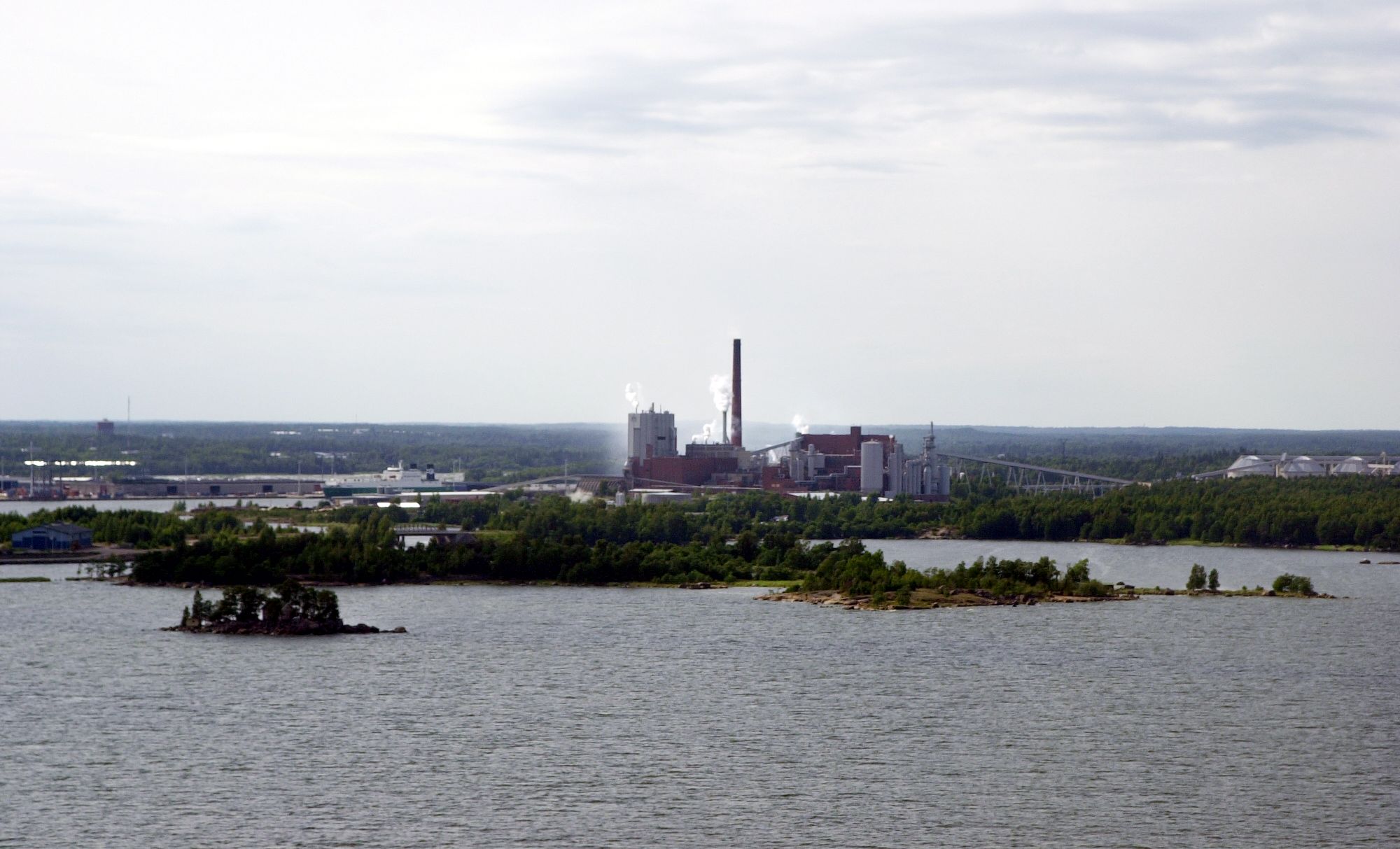
Fish farming adds its own load
Fish farming in Finland is concentrated in the southwestern and southern marine areas. In the Åland Sea and the Archipelago Sea, fish farming is the second largest source of phosphorus and nitrogen pollution in the seas, only agriculture surpasses it.
Nutrient emissions from fish farming have significantly decreased since the peak years of the late 1980s. However, there is still room for improvement. Various sludge removal systems have been tried to mitigate nutrient emissions from net cages, but they have not worked very well. The most effective methods currently are feed choices and improved feeding techniques.
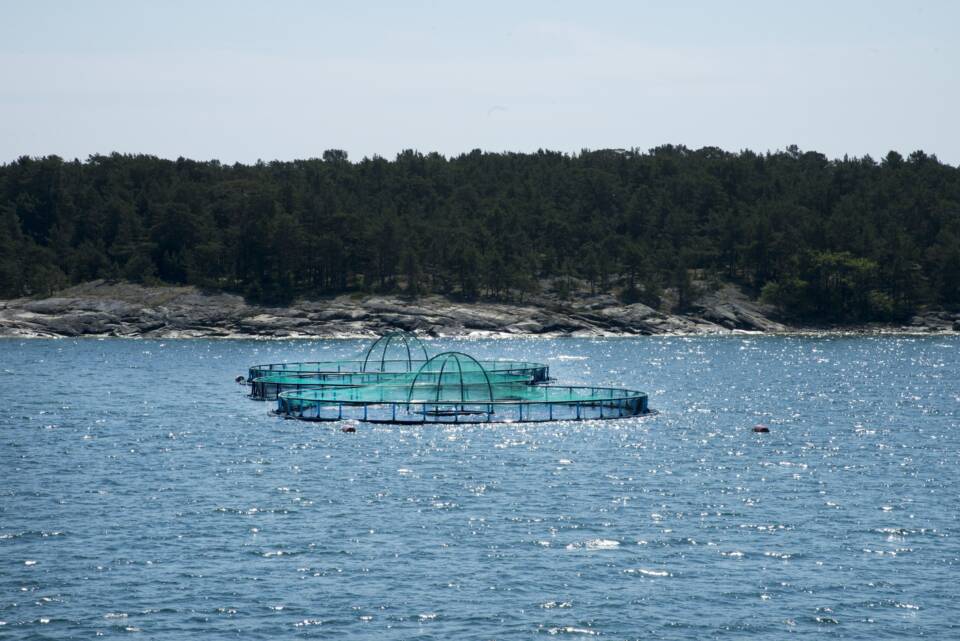
Nitrogen also ends up in the seas from the air
The third largest source of nitrogen in the Gulf of Finland and the Bothnian Sea is atmospheric nitrogen deposition into lakes, which rivers then carry to coastal waters. Nationwide, nitrogen deposition is roughly as significant a source of nitrogen pollution in water bodies as municipal wastewater. When direct deposition into the sea is added, the importance of nitrogen deposition rises to the second largest source of nitrogen pollution in Finland’s coastal waters.
Part of the nitrogen deposition comes from ship exhaust gases. Maritime nitrogen deposition decreased by over a quarter between 2000 and 2015 and has since developed variably.
In addition to nitrogen emissions into the air, maritime traffic and boating burden the Baltic Sea with wastewater. Discharging wastewater from ships into the sea is prohibited in Finnish territorial waters, as is emptying small boat septic tanks at sea. However, this still occurs in international waters.
-
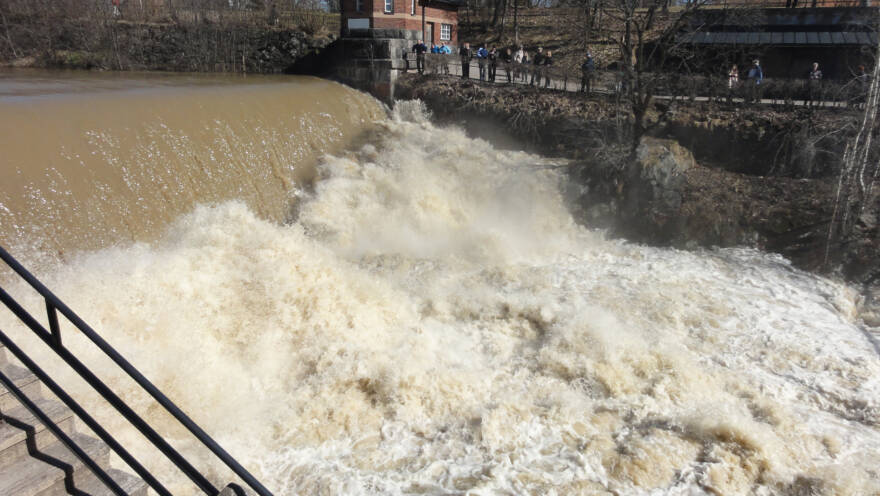 Find out more
Find out moreReducing environmental load
-
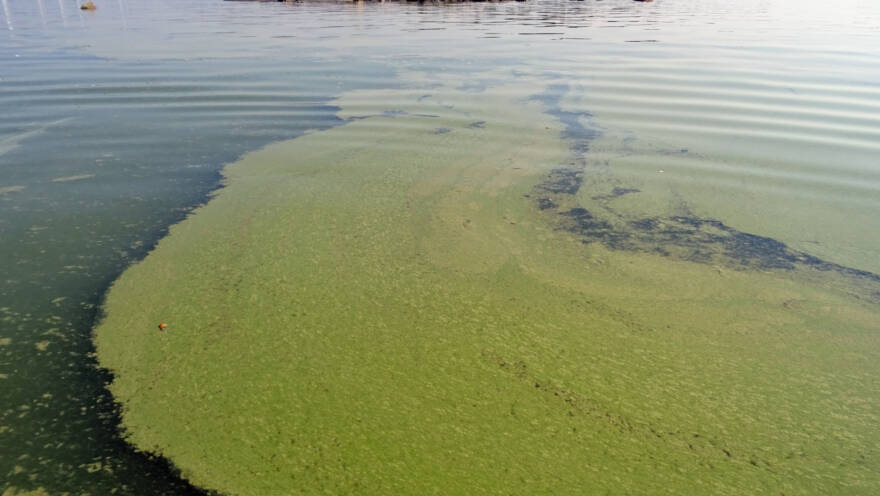 Find out more
Find out moreLegislation: Environmental load

